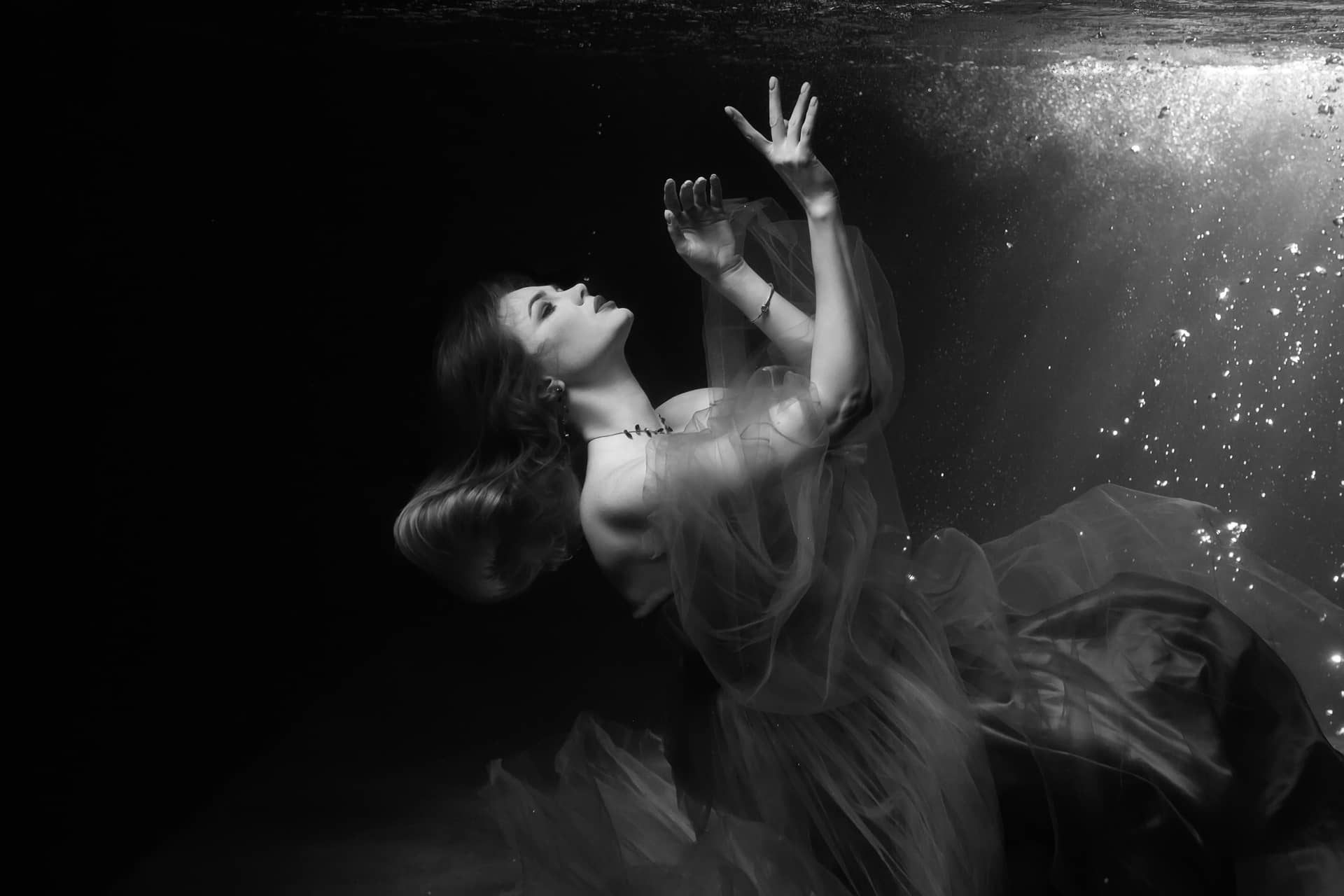Many of us are familiar with the Walt Disney animated feature “The Little Mermaid.” Of course, some of us may have read variations of the children’s tale, but not all of us have read Hans Christian Andersen’s story or are familiar with its story’s origins. There are multiple versions of this tale. Andersen was influenced by “Undine” published in 1811 and “Melusine,” a version of this story that was compiled between 1382 to 1394.
In all of these stories the mermaid suffers. We know this widely because a man who suffered greatly in life wrote about her suffering, and in doing so he told us about his own grief, his own disconnections from the world. “But a mermaid has no tears, and therefore she suffers so much more,” Hans Christian Andersen wrote in “The Little Mermaid.”
The Disney animated feature The Little Mermaid was released in 1989 and was a massive success grossing nearly $600 million worldwide. It featured a beautiful red-headed mermaid named Ariel, a Caribbean crab named Sebastian, a tropical fish named Flounder, Ariel’s father, King Titan, Prince Eric, and of course, a cornerstone of many Disney films, an iconic villain, the sea witch Ursula. There were songs sung that many of us heard again and again and still do:
We got the spirit
You got to hear it
Under the sea
Disney’s The Little Mermaid deviates from Hans Christian Andersen’s fairytale “The Little Mermaid” originally published in 1837 in many ways. Most fairy tale animated features deviate from the original source material, because many fairy tales while written with children in mind are tales of warning, tragedy, and horror.
Andersen is one of the most significant creators of fairy tales from the Victorian period. Much of his inspiration was derived from his family, a father who was a fisherman, a mother who was a washerwoman, and a grandmother who was said to be quite fanciful. It was a friend and mentor of Andersen who encouraged Andersen to abandon the epics he was writing at the time and lean into the wonder of his stories. Andersen is more like Charles Dickens than the Grimm Brothers in that he consciously wove in aspects and experiences of his own life into the source material. Each of Andersen’s fairy tales can be explored for hidden treasures and reflections of his own experiences. The pain of each of his stories is that when thoroughly explored, we can see that the author was begging to be seen and understood, but ultimately, at least within his lifetime, Andersen remained largely misunderstood.
Like many authors, Andersen sought to be recognized and admired by his peers, longing to be accepted as an artist, and not just as a writer of fairy tales, but he aspired to be appreciated as a creator of novels, poetry, short stories, dramas, and of course, his fairy tales. The cruelty is that today he is largely just recognized as being an author of fairy tales and not for his great accomplishments in other long and short form writing.
Andersen’s life was far from a fairy tale, he never escaped the poverty he was raised in, living much of his live impoverished. Throughout his works, Andersen would frequently illustrate the moral and idealistic qualities that he wished he could embody within his own life, particularly behavior that was deemed “proper” during this time period. His stories are projections from his lived experiences. He was superstitious, overcome with anxiety, and struggled with his own sexuality, with his need and wanting to be loved, but never truly finding a love that satisfied him. He experienced sexual attraction to the same gender, writing about it in his journals. He would then also pursue women who were unreachable or unattainable. Most heartbreaking are his pleas in his journals to God begging for a partner:
“Give me a livelihood! Give me a bride! My blood wants love, as my heart does!”
This is what much of Andersen’s “The Little Mermaid” explores, this quest for love that is unreachable, that is dismissive, and how this pursuit of someone who does not love us leads to our ultimate destruction.
“I know that I shall love the world up there, and all the people who live in it.”
In reading “The Little Mermaid” there are also features of class struggles. For example, the Little Mermaid can be perceived as originating from a “lower class,” and from beneath the sea she emerges to obtain a soul. When she does, she falls in love with someone from a royal class, both difficult to obtain because of his social class ranking and because of his humanity. Yet, the Little Mermaid pursues this love nonetheless, meeting with the sea witch, who is unnamed in Andersen’s story but has been named Ursula in the Disney version. This meeting has the elements of the classic “deal with the devil” German legend of Johann Georg Faust in which the successful protagonist makes a pact with the devil’s representative, Mephistopheles, in order to obtain worldly goods and knowledge. The legend of Faust ends with him being carried off to hell. Our Little Mermaid trades in her beautiful voice, a treasure, for human legs. Yet, as with many pacts with darkness, there is trickery. The Little Mermaid grows legs, yet with each step she takes the pain is excruciating as if knives are being dug into her flesh. Additionally, if the prince does not fall in love with the Little Mermaid within time specified by the witch then she would die and turn into sea foam.
The sea witch even presented her with a warning, but the Little Mermaid proceeded nonetheless with the deal:
“I know what you want,” said the sea witch; “it is very stupid of you, but you shall have your way, and it will bring you to sorrow, my pretty princess.
The Little Mermaid makes it to land, she meets her prince, she falls in love with him, and she even saves his life, twice. Regardless of her sacrifices for him, the prince admits he is merely fond of her, and not romantically in love with her.
“Day by day the prince grew fonder and fonder of her; but he loved her as he would have loved a good child, and had no thought of making her his queen.”
The Little Mermaid dies at the end of Andersen’s story, but spirits have witnessed her suffering and bless her with a soul and the divine mission of good deeds.
Still, the cruelty in all of this remains, as well as confusion all in the name of love. The Little Mermaid fell in love with a human royal; one would argue that this could be out of her class. She also proceeded with a series of actions that were self-destructive and lacked clear rationalization, meeting with a sea witch, giving up her voice—becoming voiceless, leaving her family in the sea to pursue a human being whom she loved but she had no guarantee would love her in return. In all of this, the Little Mermaid had lost herself, becoming divided and diminished all for the pursuit of someone who lived in an entirely different world, in an entirely different existence, who never accepted her for who she was – very much like people whom Andersen pursued.
The Little Mermaid suffered so much and lost her life all in the pursuit of approval, all in the pursuit of love. Her death, due to self-sacrifice is horror due to her own self-abandonment and self-depravation.
“The Little Mermaid” speaks so much to this idea of sacrificing, how those from “beneath the sea,” or lower class, can only rise above their station of life if they perform a series of sacrificial acts. While rank and high station can often be tied to wealth or nobility, there is commentary here in terms of the connections one needs in the world in order to move rank and class and what are those grueling sacrifices one must be prepared to undergo in order to advance.
“The Little Mermaid” also serves as a representation, a reflection of the artist. The Little Mermaid has deluded herself into believing that if she performed these acts of sacrifice that the prince would love her, and yes, at no point did the prince ever ask her to take part in any of these activities, these were all her own making, the belief that through her art—the distortion of herself that she could attract him, and obtain his love.
Self-denial. Abnegation. All of this encompasses her suffering, and this is the great masterpiece that Andersen delivered to us, a tale of longing, yearning, of desiring to be seen, of distorting our hearts, minds and bodies, all for another, all for the chance at a nice life, and love.
The utter grueling exploitation and suffering of it all, and then the ultimate price—death, shows us the Little Mermaid and Andersen deserved more than the horrors they experienced.

